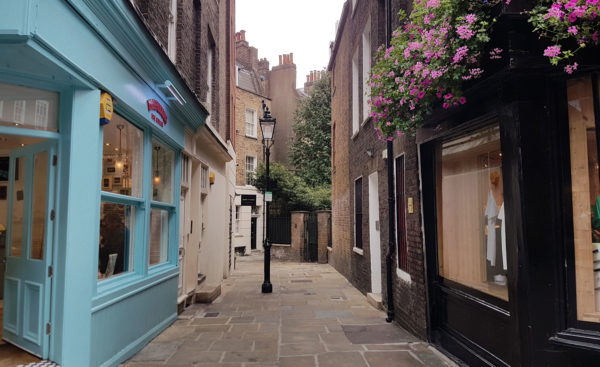This is a quiet little space just a heartbeat from the bustling Covent Garden.
Although Covent Garden was one of the earlier areas of London to be developed, this patch of land remained open fields for far longer, known in 1670s as Cock and Pye Fields.
It remained empty while all around built up as the land was known to be particularly wet, and was later surrounded by a deep ditch that ran around the fields and down to the Thames. The name came from a local pub which was particularly noted for selling the luxury dish of “peacock in a pie”, where the head and tail of the bird were displayed outside the the main body of the pie.
The deep ditch was covered over in the 1670s as part of the building of the Southampton Sewer, and that development was the impetus for the entrepreneur and politician, Thomas Neale to acquired freeholds to portions of the land in 1690 and he is the person who developed the area’s current layout with Seven Dials at its heart.
The area was however also used as a laystall for the local area – so the shops and houses that line the area are today largely built on human excrement.
It seems that Tower Court was laid out at the same time as the rest of the area. Although it looks like its a single passage that was later cut in half by Tower Street, that’s not how it started. The eastern half was laid out of Lumber Court, with the smaller western half called Lumber Street.
Both were later merged and renamed as Tower Court.
Today most of the passage is lined with a terrace of attractive late 18th century three storey houses and in places a few sympathetic modern builds as a legacy of WW2 bomb site clearances.
One of the more notable features is that along one side, a fence and trees replace houses, and that’s the site of a former Victorian school, that was for a while the headquarters of Andrew Lloyd Webber’s Really Useful Group but now converted to apartments.
Today the Court is a mixed affair, with a genteel eastern side lined with nice houses, and the ornately decorated back of the local pub — and the western end being a rat run between two theatres and being more a dumping space for rubbish and staff popping out for a smoke.
But, do look for the art-deco lamps that still remain above the fire escape.











